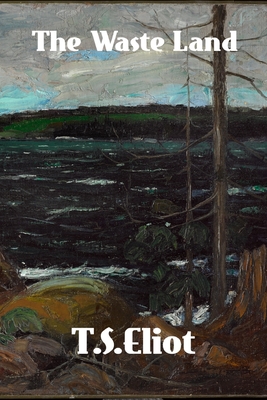The Waste Land

The Waste Land
The Waste Land is a poem by T. S. Eliot, [A] widely regarded as one of the most important poems of the 20th century and a central work of modernist poetry. Published in 1922, the 434-line[B] poem first appeared in the United Kingdom in the October issue of Eliot's The Criterion and in the United States in the November issue of The Dial. It was published in book form in December 1922. Among its famous phrases are "April is the cruelest month", "I will show you fear in a handful of dust", "These fragments I have shored against my ruins" and the Sanskrit mantra "Shantih shantih shantih".[C]
Eliot's poem combines the legend of the Holy Grail and the Fisher King with vignettes of contemporary British society. Eliot employs many allusions to the Western canon: Ovid's Metamorphoses, Dante's Divine Comedy, Shakespeare, Milton, Buddhist scriptures, the Hindu Upanishads and even a contemporary popular song, "The Shakespearean Rag." The poem shifts between voices of satire and prophecy featuring abrupt and unannounced changes of speaker, location, and time and conjuring a vast and dissonant range of cultures and literatures.
The poem is divided into five sections. The first, "The Burial of the Dead", introduces the diverse themes of disillusionment and despair. The second, "A Game of Chess", employs alternating narrations, in which vignettes of several characters address those themes experientially. "The Fire Sermon", the third section, offers a philosophical meditation in relation to the imagery of death and views of self-denial in juxtaposition, influenced by Augustine of Hippo and Eastern religions. After a fourth section, "Death by Water", which includes a brief lyrical petition, the culminating fifth section, "What the Thunder Said", concludes with an image of judgment
PRP: 82.58 Lei
Acesta este Prețul Recomandat de Producător. Prețul de vânzare al produsului este afișat mai jos.
74.32Lei
74.32Lei
82.58 LeiLivrare in 2-4 saptamani
Descrierea produsului
The Waste Land is a poem by T. S. Eliot, [A] widely regarded as one of the most important poems of the 20th century and a central work of modernist poetry. Published in 1922, the 434-line[B] poem first appeared in the United Kingdom in the October issue of Eliot's The Criterion and in the United States in the November issue of The Dial. It was published in book form in December 1922. Among its famous phrases are "April is the cruelest month", "I will show you fear in a handful of dust", "These fragments I have shored against my ruins" and the Sanskrit mantra "Shantih shantih shantih".[C]
Eliot's poem combines the legend of the Holy Grail and the Fisher King with vignettes of contemporary British society. Eliot employs many allusions to the Western canon: Ovid's Metamorphoses, Dante's Divine Comedy, Shakespeare, Milton, Buddhist scriptures, the Hindu Upanishads and even a contemporary popular song, "The Shakespearean Rag." The poem shifts between voices of satire and prophecy featuring abrupt and unannounced changes of speaker, location, and time and conjuring a vast and dissonant range of cultures and literatures.
The poem is divided into five sections. The first, "The Burial of the Dead", introduces the diverse themes of disillusionment and despair. The second, "A Game of Chess", employs alternating narrations, in which vignettes of several characters address those themes experientially. "The Fire Sermon", the third section, offers a philosophical meditation in relation to the imagery of death and views of self-denial in juxtaposition, influenced by Augustine of Hippo and Eastern religions. After a fourth section, "Death by Water", which includes a brief lyrical petition, the culminating fifth section, "What the Thunder Said", concludes with an image of judgment
Detaliile produsului










